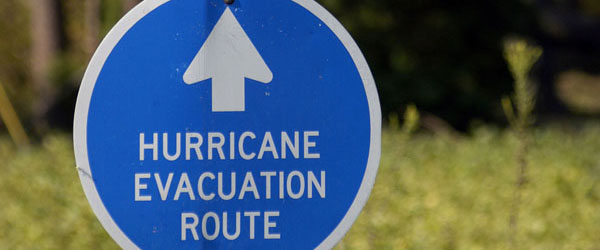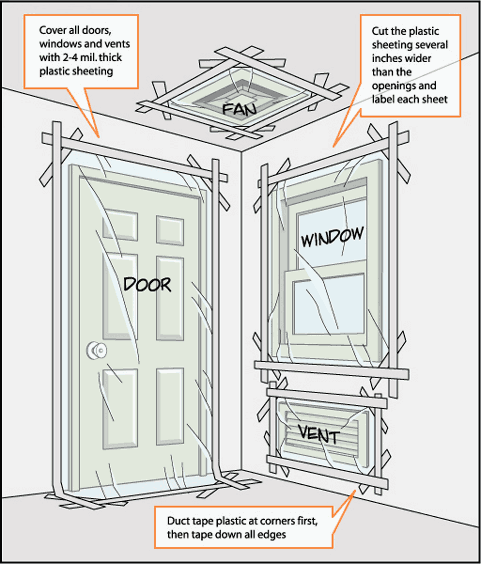 Prepare now in the event of an evacuation.
Prepare now in the event of an evacuation.
Depending on your circumstances and the nature of the hazard, the first important decision is whether you stay put, also known as sheltering in place, or evacuate. You should understand and plan for both possibilities.
There may be conditions under which you will decide to get away or there may be situations when you are ordered to leave. Follow these guidelines for evacuation:
- Plan places where your family will meet, both within and outside of your immediate neighborhood. Use the Family Emergency Plan to decide these locations before a disaster.
- If you have a car, keep a full tank of gas in it if an evacuation seems likely. Keep a half tank of gas in it at all times in case of an unexpected need to evacuate. Gas stations may be closed during emergencies and unable to pump gas during power outages. Plan to take one car per family to reduce congestion and delay.
- Become familiar with alternate routes and other means of transportation out of your area. Choose several destinations in different directions so you have options in an emergency.
- Leave early enough to avoid being trapped by severe weather.
- Follow recommended evacuation routes. Do not take shortcuts; they may be blocked.
- Be alert for road hazards such as washed-out roads or bridges and downed power lines. Do not drive into flooded areas.
- If you do not have a car, plan how you will leave if you have to. Make arrangements with family, friends or your local government.
- Take your emergency supply kit unless you have reason to believe it has been contaminated.
- Listen to a battery-powered radio and follow local evacuation instructions.
- Take your pets with you, but understand that only service animals may be permitted in public shelters. Plan how you will care for your pets in an emergency.
If time allows:
- Call or email the out-of-state contact in your family communications plan. Tell them where you are going.
- Secure your home by closing and locking doors and windows.
- Unplug electrical equipment such as radios, televisions and small appliances. Leave freezers and refrigerators plugged in unless there is a risk of flooding. If there is damage to your home and you are instructed to do so, shut off water, gas and electricity before leaving.
- Leave a note telling others when you left and where you are going.
- Wear sturdy shoes and clothing that provides some protection such as long pants, long-sleeved shirts and a cap.
- Check with neighbors who may need a ride.
Staying Put (Sheltering In Place)
Whether you are at home, work or elsewhere, there may be situations when it's simply best to stay where you are and avoid any uncertainty outside.
There may be circumstances when staying put and creating a barrier between yourself and potentially contaminated air outside, a process known as "sealing the room," is a matter of survival.
Use common sense and available information to assess the situation and determine if there is immediate danger. If you see large amounts of debris in the air, or if local authorities say the air is badly contaminated, you may want to take this kind of action.
The process used to seal the room is considered a temporary protective measure to create a barrier between you and potentially contaminated air outside. It is a type of sheltering in place that requires preplanning.
- Bring your family and pets inside.
- Lock doors, close windows, air vents and fireplace dampers.
- Turn off fans, air conditioning and forced air heating systems.
- Take your emergency supply kit unless you have reason to believe it has been contaminated.
- Go into an interior room with few windows, if possible.
- Seal all windows, doors and air vents with 2-4 mil. thick plastic sheeting and duct tape. Consider measuring and cutting the sheeting in advance to save time.
- Cut the plastic sheeting several inches wider than the openings and label each sheet.
- Duct tape plastic at corners first and then tape down all edges.
- Be prepared to improvise and use what you have on hand to seal gaps so that you create a barrier between yourself and any contamination.
- Local authorities may not immediately be able to provide information on what is happening and what you should do. However, you should watch TV, listen to the radio or check the Internet often for official news and instructions as they become available.

Shelter Safety for Sealed Rooms
Ten square feet of floor space per person will provide sufficient air to prevent carbon dioxide build-up for up to five hours, assuming a normal breathing rate while resting.
However, local officials are unlikely to recommend the public shelter in a sealed room for more than 2-3 hours because the effectiveness of such sheltering diminishes with time as the contaminated outside air gradually seeps into the shelter. At this point, evacuation from the area is the better protective action to take.
Also you should ventilate the shelter when the emergency has passed to avoid breathing contaminated air still inside the shelter.

